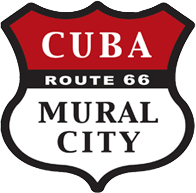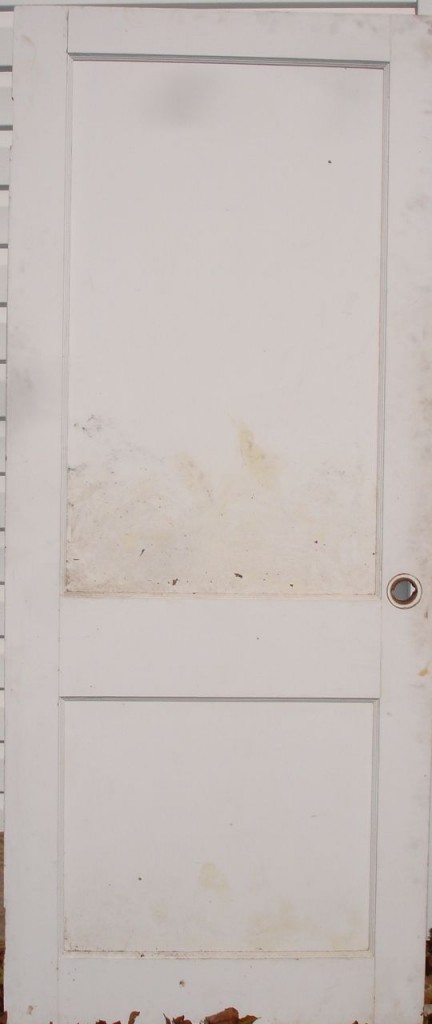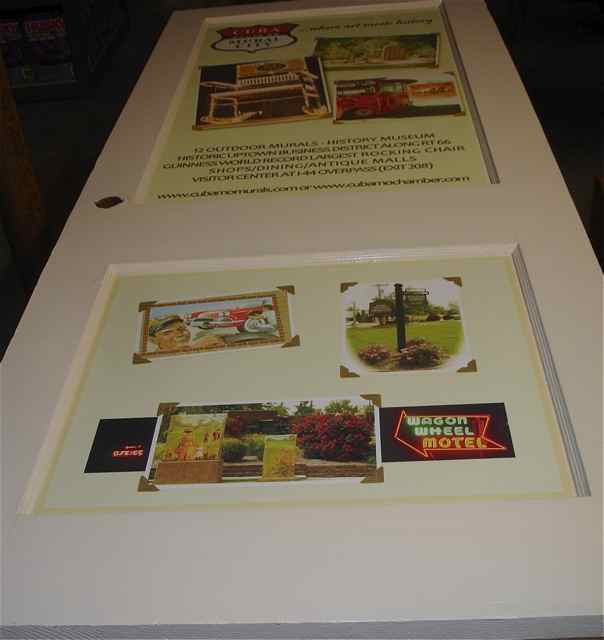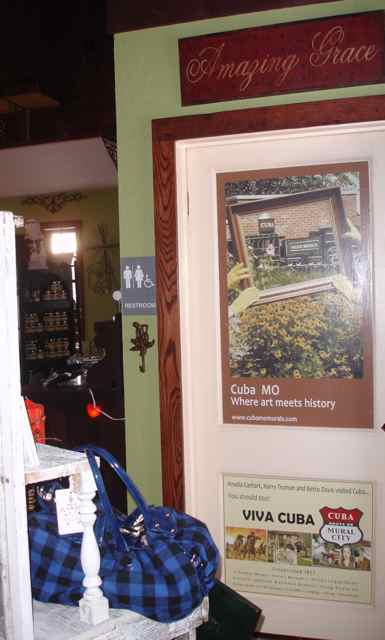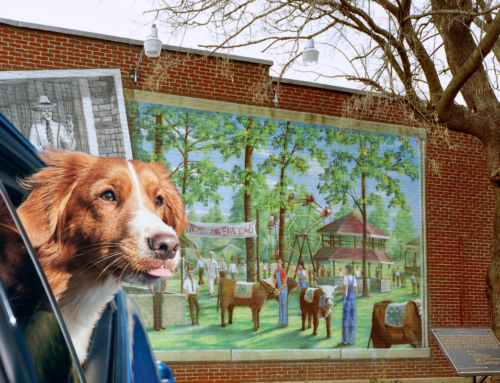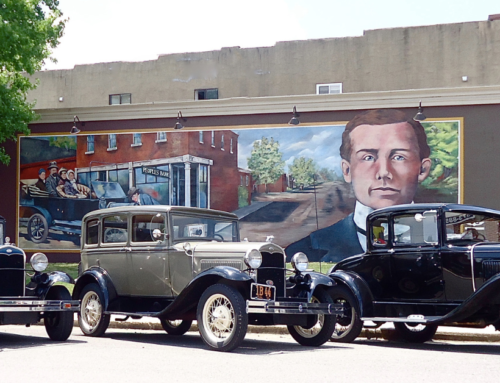Cuba, MO…If it doesn’t move, we beautify it…
Janus, a god in Roman mythology, was the god of gates, doors, beginnings, and endings. January is named for him. He is often pictured with two faces or heads, facing in opposite directions. He looks both backward to where he has been and forward to where he is going.
It is seems a appropriate that one of Viva Cuba’s first projects in 2010 was completing a door project that we began in 2009.
Doors provide a way in and way out. This old door from the 1930s Route 66 Wagon Wheel Cafe building became a Viva Cuba project in 2009 that took us into 2010 when it took its place in the restored building that is now called Connie’s Shoppe at the Wagon Wheel Motel, a gift shop that sits in front of the original Route 66 Tudor-style Wagon Wheel Motel cottages.
Last August, the new Wagon Wheel Motel owner Connie Echols asked the Viva Cuba organization if we would like to take an old door that would be in the new restored gift shop and decorate it. With a little discussion, members decided it was doable, and we would use some of the photos and copy that we had in our file on the door. It would promote not only Viva Cuba but other attractions as well. Viva Cuba’s Route 66 Mural City logo would hold a prominent position. I believe that Viva Cuba member Jill Barnett said it sounded like fun. I would remember that later.
George Reed picked up the door in his custom (primer-covered) 1988 Chevy truck Ivan the Terrible and took it to the Hwy. 19 Peoples Bank basement while the Wagon Wheel building was undergoing renovation. The bank basement serves as Viva Cuba’s storage area for auction chairs, brochures, project materials, and sometimes a work area. As long as banking facility holds down the noise from the bank’s business upstairs, we don’t mind them being there.
Later, George took the door back to the Wagon Wheel to have it fitted to the new frame. Then he picked it up and drove it back to the bank basement. He wasn’t sure why he was driving the door back and forth across town, but he did it. I am not sure that he was having fun though.
We needed to fill the four inset panels with photographic panels, front and back and give the door a base coat of paint.
With a jumble of photos and copy available, it soon became apparent we needed some organization and artistic decisions. Artist Julie Brand provided her input on what images and copy seemed to go together. We wanted to give the door an antiqued look to fit with the buidling’s age.
Then the photos and print had to be organized digitally so four large resolution photographic panels could be printed. Our tech person Lisa Hoover started building the panels using Photoshop. There were many individual photos that had to be built into the design. A few adjustments had to be made and panels had to be adapted from the original design. It took time to get it all together.
Jill Barnett consulted with Echols, picked a base color, and gave the door a couple of coats of a neutral color.
When the four photographic panels were ready to print, John Herman of the Anheuser-Busch Distributorship graciously worked with Lisa Hoover to print the panels using his commercial printer. The panels with adhesive backing looked good after they rolled off the printer.
It was time to put them on the door. Janet McLain who had done this type of work before was called in for her expertise on getting the panels on the door. The panels would have to be covered with several layers of water-based polyurethane to protect them from everyday wear.
It doesn’t seem like it would take much time for the project up to this point, but believe me it took hours of consultations, emails, and running around. But the panels were looking good.
Putting coat after coat of sealant on the first side started. It was a two-coat a day process with light sanding between coats. It received seven coats in all. Christmas Eve, it only got one coat.
Then after Christmas there was the big flip (assisted by Kim Baldwin), and I started in on the second side. Did I mention that this was tedious work. I planned my days around coating, dry time, and re-coating. I carried my brushes back and forth from home to wash them. But after I finished one coat on this side, I noticed there was a typo on the top panel. Coating ceased, and we asked John Herman to print a new, corrected panel.
The new panel was applied. Coatings of the sealant resumed until the job was finished.
George Reed and his truck Ivan the Terrible picked up the double plastic wrapped door and delivered it to the Wagon Wheel where it was placed in owner Connie Echol’s office while she was out of town at a gift show.
While not perfect, it’s done. The door has taken its place in the Route 66 landmark Wagon Wheel Cafe building. It’s unique, and I hope when you go into Connie’s Shoppe, you give it a look. Viva Cuba is proud to have had this small role in the Wagon Wheel’s new life.
For a little more history on the Wagon Wheel Cafe building, see the Cuba Free Press article “Wagon Wheel Cafe known for its fine food.”
